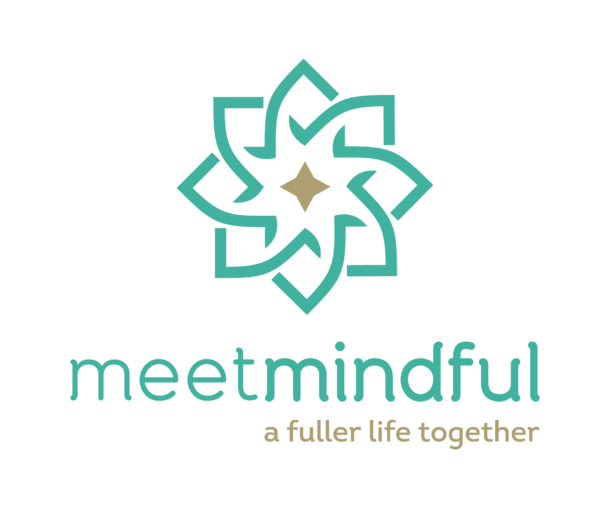STEP 1: Don’t say “calm down.” STEP 2: Read on, as Kacy Zurkus nails down the secret to emotional evolution.
I remember when my husband and I were first dating and I feared that I wasn’t good enough for this relationship. We made it to that three-month mark when I began to wonder, “where does he see this going?”
All those nervous questions danced in my head. Am I his girlfriend? When is it ok to invite him to family events? Are we going to talk about our status? I longed for confirmation that he wasn’t looking for a bigger, better deal.
Filled with anxiety and the fear of rejection, I asked him what he thought. “I like to keep things light,” he said. I was crushed. My negative interpretation of his words fueled my insecurity, and we had a rocky couple of weeks before we were able to really understand each other.
Throughout the course of my life, people have used various words from “emotional” to “passionate” to describe me.
Undeniably, I wear my heart of my sleeve. I cry as loudly as I laugh, and when the stress of my world weighs too heavily upon me, I struggle to find the courage to get out of bed. I was certain that my sister and I were the only people who suffered from this ‘condition’ of being emotional.
We were wired this way—‘this way’ being what we defined as ‘a little bit crazy’ because everyone else seemingly has control over their emotions. I don’t know anyone who cries as much as I do, but last month I learned the need to understand my tears and fears and many other emotions.
A few weeks ago I attended a Leadership Think Tank at which I heard guest speaker Dr. Ryan Madigan, an instructor in Psychology, Harvard Medical School and a Research Fellow, BU Center for Anxiety and Related Disorders and the Director, Boston Child Study Center, talk about the work he does with young people who suffer from anxiety, depression, and other behavioral disorders. To my surprise, when he asked us to describe what different emotions felt like, ranging from joy to guilt and anger, everyone in the room had similar answers to me.
Two powerful anecdotal tales that Dr. Madigan shared in order to contextualize his work for us continue to resonate with me.
First, he said, “Imagine if I sent an email this morning of a last minute cancellation. I could send a message saying that I had a migraine or some GI issues, or I could say that I felt really sad and didn’t want to get out of bed. Which of those two messages would be more socially acceptable?”
I could feel my heart resting snuggly inside my chest at the very recognition that another adult—a man no less—understood that sometimes a persona can feel so sad that s/he just want to stay curled up in a ball. One cohort deemed the words of Dr. Madigan revolutionary because the conceptions we have about emotions are pervasive in all walks of life.
Especially in our personal relationships.
To say that my husband is even-keeled and level headed is an understatement. I often joke with him about his lack of inflection or emphasis when he is angry about a situation. Where I yell, he remains calm. When I cry, he says, “I feel bad” in the same voice he uses when he’s angry. Perhaps the universe directed us toward each other because we are such polar opposites. He is an electrical engineer. I am a teacher of English. He responds logically to just about every conflict life presents to him, while I react spastically.
My husband, bless his optimism, is a problem solver. On the occasion when I do feel immobilized by my sadness, he offers loving suggestions of, “why don’t we go to movie?”, “why don’t you go do a yoga class?” or “maybe you should call your sister.”
He, like many people, has been socially conditioned to solve problems. We can’t be productive in our work or our relationships when our stress levels are high, so in order to return to productivity, we need to solve the problem. But what’s the solution to being happy? Dr. Madigan argued that unless we ask “why” in response to our emotions, we are less likely to reach an authentic solution.
The second analogy that made so much sense was the fear inducing act of ignoring the gas light on a car. While Dr. Madigan used a different example, the idea is the same. Let’s say we are driving through the desert together when my gas light comes on. Granted, we just passed a fuel station, but I don’t want to stop, so I pull out my sharpie and color out the gas light and draw a new line pointing to full. You and my other passengers might start to freak out at the absurdity of my actions. I can’t simply ignore the impending empty tank, particularly out in the blazing sun where we are miles away from another service area.
Yet we often ignore the signals our emotions are trying to convey.
Telling someone, “don’t worry,” or “calm down” is the emotional equivalent of ignoring the gas light. We need to understand our emotions as indicators of our needs. If I’m feeling anxious, it’s likely because I fear some external threat. Asking why allows me to identify that threat so I can avoid it.
As I continue to reflect on the most powerful takeaways from the lecture, I repeatedly return to the advice that an emotional problem can not simply be solved. It needs to be understood. Instead of Problem-Solution, Dr. Madigan suggests a different approach: Problem-Cause-Goal-Solution.
In only a couple of weeks, these teachings have changed my life, but it’s a matter of being mindful of my purpose. I want to be happy. I want to grow and evolve in the emotional intimacy I share with my husband. Joy and love are the emotions we need to pursue if our goal is happiness, so we need to practice being attentive to the signals that divert us from all that brings us joy.
[image: via pixabay]











